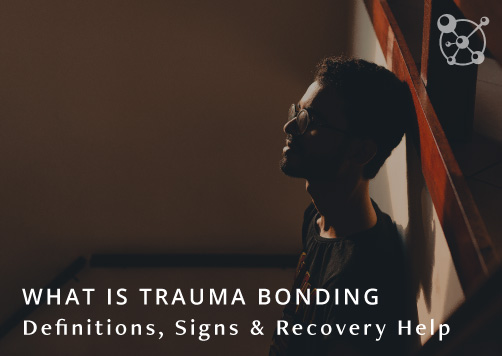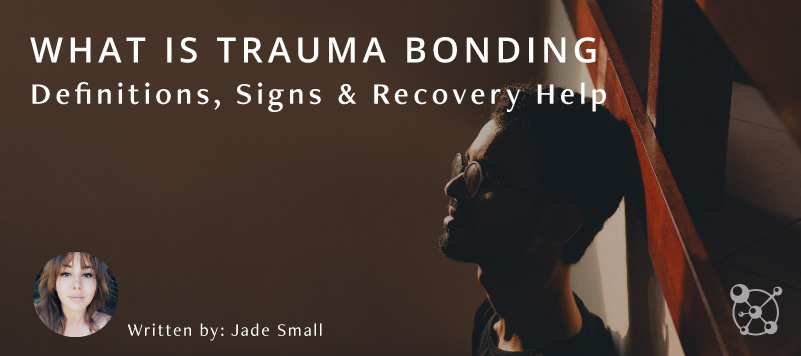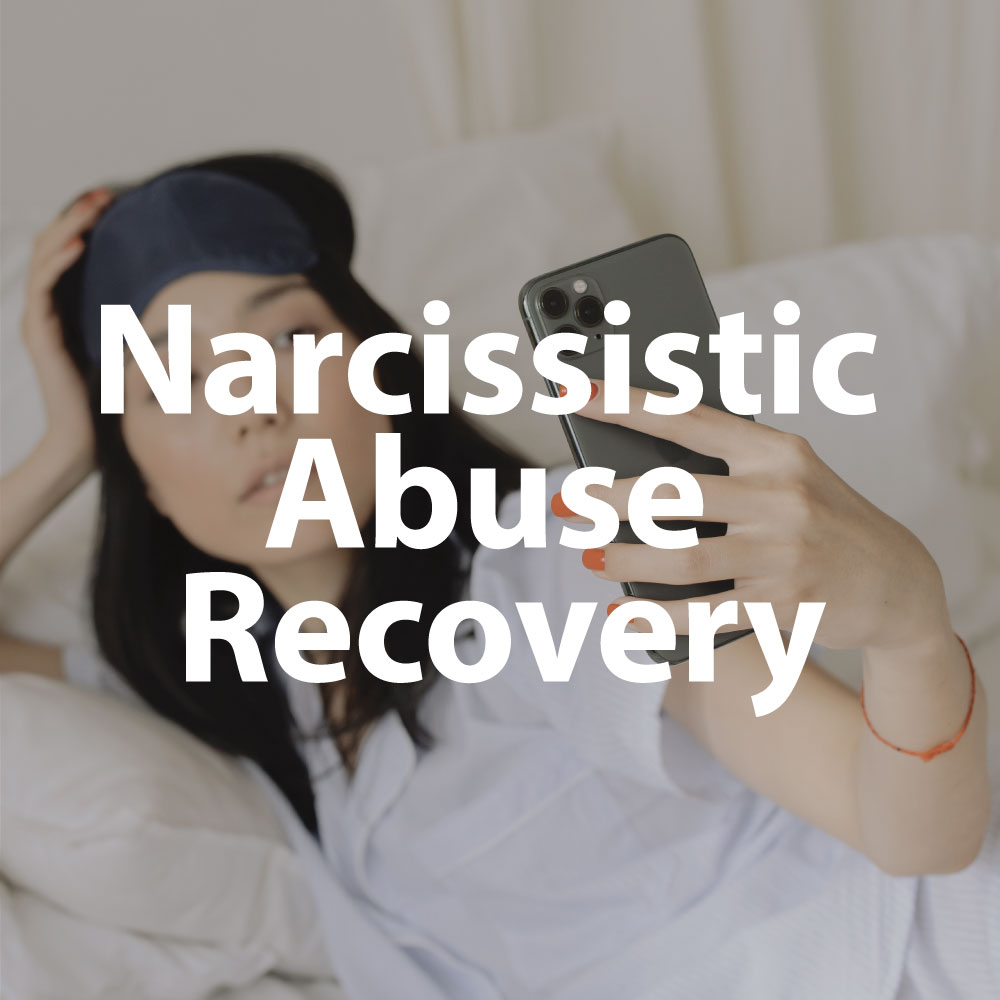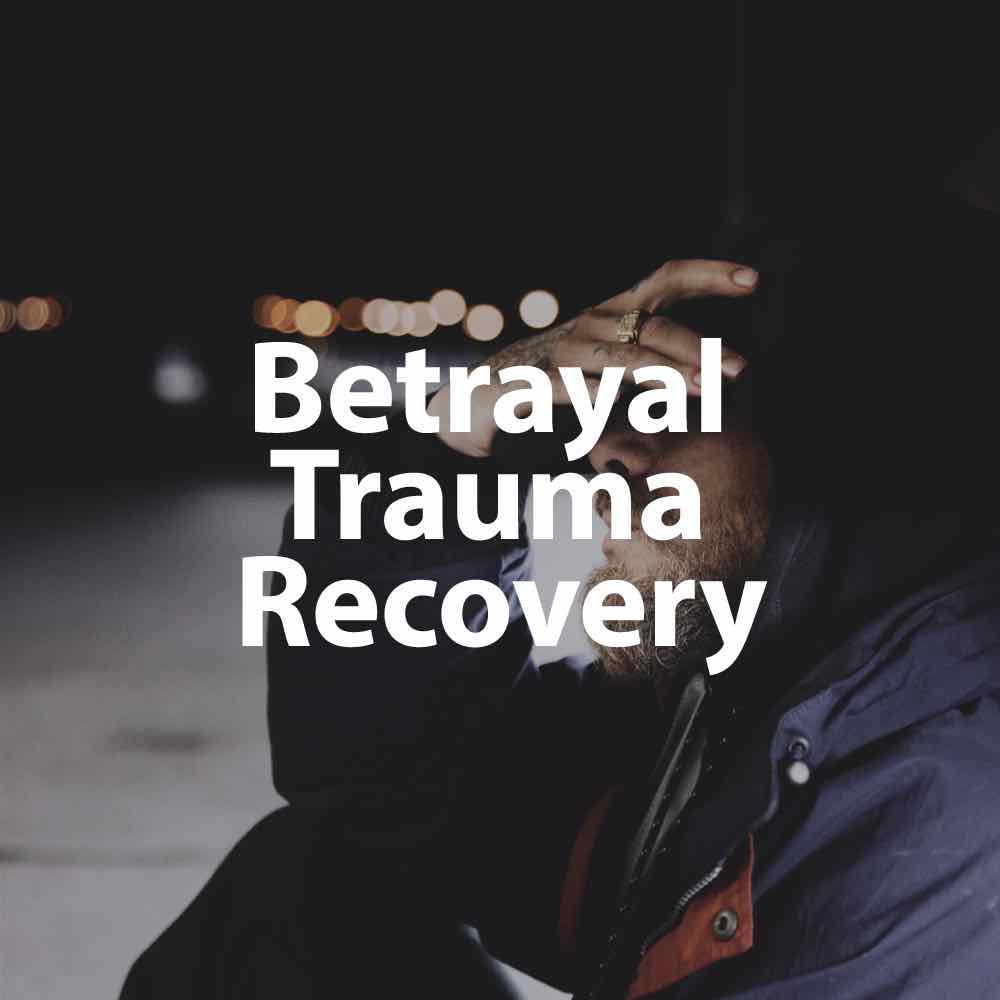What Is Trauma Bonding? (Definition, Signs & Recovery Help)

Often, many people in relationships with a partner or family member can find themselves in a cycle of abuse, which then turns from abuse to positive reinforcing behavior, creating a cycle leading to trauma bonds. This can lead the victim to sympathize with the abuser. In this article, we will be looking at what trauma bonding is and the symptoms and signs to look out for, and how to go about breaking away from this trauma bond.
Table of Contents
What is trauma bonding?
Trauma bonds are the toxic relationship between the abuser and the victim of the abusive relationship. It can be found in romantic relationships, between a child and abusive family members, or with a hostage and kidnapper situation. Trauma bonding can occur through the cycle of abusive behavior and positive behavior from the abuser. Through this way abusive behavior is normalized and whenever positive reinforcement is shown it can release an almost addictive-like dopamine rush, allowing for the abused to disregard the negative behavior and only focus on the infrequent good behavior.
Trauma bonding definition
Trauma bonding occurs when there is a cycle of mental and physical abuse with periods of love and affection between an abuser and the abused, leading the abused to grow an unhealthy attachment to the abusive person. “Victims have a certain dysfunctional attachment that occurs in the presence of danger, shame, or exploitation” (Patrick Carnes, 1997)
 What is traumatic bonding theory?
What is traumatic bonding theory?
Traumatic bonding occurs as a psychological response from the abused in an unhealthy relationship with a cycle of abuse. When the victim falls in this cycle of abuse, devaluation and positive reinforcement they can find themselves sympathizing with their partner, expecting things can change.
What does trauma bonding feel like?
Trauma bonding feels like playing a slot machine. We put in in the hopes that we get something back, but we don’t win most of the time. But when we do it releases a large amount of dopamine in the brain, leading one to continue on in their toxic relationship for the next big win or rush, creating a cycle.
Trauma bond symptoms & signs
Trauma bonding has various signs and symptoms that can be identified in those that have been trauma bonded in an unhealthy relationship with an abusive person.
- Agreeing to the abuser’s reasoning for abusive behavior.
This is one of the main warning signs of a trauma bond, the victim will try and justify the actions of the abuser who have played on their mental health, often by gaslighting them into a sense of self-doubt and confusion about the nature of the relationship.
- Distancing oneself from family and friends
 Someone who is trauma bonded might distance themselves from their healthy relationships with loved ones as they often can bring up the fact of the abuse which can often be hard to accept for the abused. It may also turn out that the abuser is psychologically manipulating this person into distancing themselves from these healthier relationships.
Someone who is trauma bonded might distance themselves from their healthy relationships with loved ones as they often can bring up the fact of the abuse which can often be hard to accept for the abused. It may also turn out that the abuser is psychologically manipulating this person into distancing themselves from these healthier relationships.
- Becoming defensive when attempts are made by outside sources to try to intervene and point out the abuse in the relationship
Often when red flags are brought up with the victim from outside sources they fail to believe that they are correct. Instead, they believe that they are in a healthy relationship and nothing is wrong. The toxic person in this relationship will use emotional abuse trying to manipulate the image the victim has on the relationship, convincing them into believing there is nothing wrong.
- Unwilling to take steps into leaving the relationship
Sometimes through psychological abuse, the abuser may weaken the victim’s self-esteem, making them feel that they can’t survive without them. This in turn leads them to feel more comfortable in the relationship rather than out. They may develop a false sense of codependency to this person as a result.
 Trauma bonding recovery: How to break a trauma bond
Trauma bonding recovery: How to break a trauma bond
It is important to leave an abusive relationship as soon as you can. Once trapped in a trauma bond it may be difficult to break things up and leave but it can be done with the necessary steps.
- Practice of self-care
By caring for oneself physically and mentally can help break the dependence on the abuser. Looking after one’s own wellness is important and can be achieved through: exercise, meditation, and speaking with and seeing friends can help.
- Start a journal
Keeping a journal is a good way to keep track of what is going on in the relationship and recording abusive behavior. Write down what happened in the day with your partner and what was said and done and cross-reference. It can help to identify negative patterns in your partner.
- Practice positive self-affirmations
 Often in a trauma bond, the abuser will seek to lessen the self-esteem of their partner so as to keep them dependent on their validation. That is why it is important to remind oneself of one’s self-worth and importance. Through daily self-affirmations one can boost their self-esteem and self-worth, helping keep up positive mental health.
Often in a trauma bond, the abuser will seek to lessen the self-esteem of their partner so as to keep them dependent on their validation. That is why it is important to remind oneself of one’s self-worth and importance. Through daily self-affirmations one can boost their self-esteem and self-worth, helping keep up positive mental health.
- Seek help from friends and family
It would be important to seek advice from loved ones, as they may help give the necessary advice on the situation. With the extra support, one can find the strength to make the changes and break the bond. One can also call the national domestic violence hotline for advice on what to do.
Key takeaways about traumatic bonding
Traumatic bonding is a very real problem around the world and necessary steps need to be taken to alerting loved ones to this cycle they may have fallen into and raise awareness of the problem at hand. There are many cases of toxic relationships through to child abuse that continues to grow. We must ensure that these issues are addressed and put an end to them. To learn how to avoid these relationships and how to spot narcissistic behavior.
FAQs
What is trauma bonding with a narcissist?
This is when at the beginning of a relationship you are shown an intense amount of love and affection but over time, gradually this starts to dissipate. It is often subtle and hard to notice at first. Then you fall into a cycle of abuse and affection which can often be confusing for the abused.
 Is it love or trauma bonding, how do I tell?
Is it love or trauma bonding, how do I tell?
Trauma bonding can feel like love but this is a false love. The abused can confuse abusive behavior with love but in a healthy relationship, there should be mutual love grown within the relationship. One can tell through identifying patterns of abuse and inconsistencies with the other’s positive behavior within the relationship.
Do I have a trauma bond?
Ask yourself if you are truly happy in your relationship. Do your friends and or family have worries about your relationship? Do you often make excuses when your partner abuses you and defend them hoping and trusting that they might change?
Can a trauma bond be broken?
Yes, it can, it might not be an easy process but it can be done. If you can recognize that you’re in this situation then that is the first step. Speak with loved ones or seek professional help to get the necessary advice on how to move forward and break this bond. Avoid blaming yourself for what has been going on and cut ties with the abuser.
Is trauma bonding the same as Stockholm Syndrome?
Stockholm Syndrome is a specific type of trauma bonding that is used specifically to describe the trauma bonding between captor and captive. Not all cases of trauma bonding entail a captor and captive dynamic.
Can a trauma bond become healthy?
No, they cannot become healthy. It is safe to assume because this is not an equal relationship leading to a very dysfunctional toxic relationship which is not good for the victim’s mental or physical health.
Do narcissists feel the trauma bond?
In some cases, they might. They might enjoy the cycle of abuse and devaluation with a bit of positive reinforcement to keep the victim confused and codependent. They may also use tactics of misuse of fear when they can tell their partners might leave them in order to ensure they are stuck with them. People with narcissism it can enjoy the admiration they get from their partner while disregarding their feelings entirely, which can get quite abusive.
Interested in becoming a QHHT Practitioner?
Find out how YOU can become a QHHT Practitioner. We offer an entire online course journey to get you started, growing, and achieving your goals.


Jade Small
I am a creative and a wanderer. Mysteries and connections are what inspire me to write. While on my path, my purpose is to bring you information to help inspire you on your journey on this place called earth.
See more from these categories
Read similar posts

The spiritual journey we take throughout life is not as black and white as it seems when we are young. The beginning of life seems so simple, but as we progress we begin to add more experiences to our belts. Eventually, the contradicting…Read More»

Numerology is an amazing tool, if you understand how it works and what the various numbers in your numerology chart mean to your life. Today we are focusing on the soul urge number. If you get a numerology reading, your soul urge…Read More»


 What is traumatic bonding theory?
What is traumatic bonding theory? Trauma bonding recovery: How to break a trauma bond
Trauma bonding recovery: How to break a trauma bond Is it love or trauma bonding, how do I tell?
Is it love or trauma bonding, how do I tell?







Responses